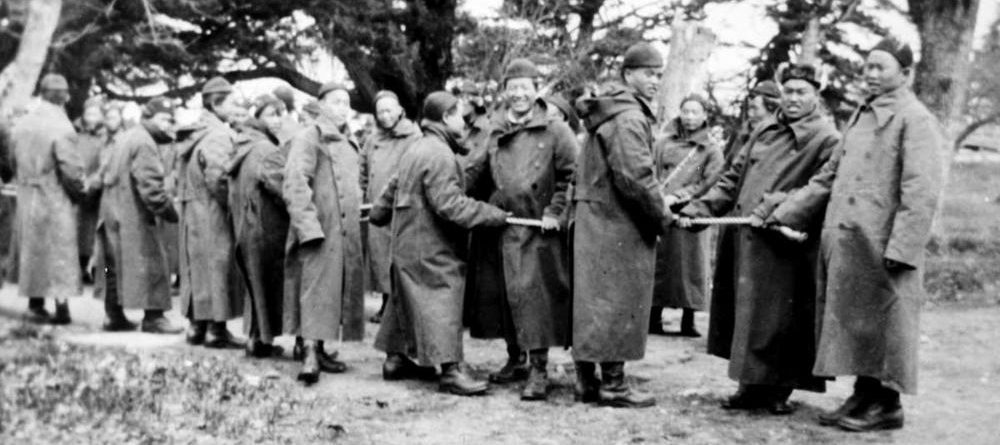During World War I, there were two prominent Chinese communities in the Victoria area – the Chinese Canadian community around Victoria’s Chinatown and the Chinese Labour Corps camp at William Head.
With a few exceptions, the two communities never came in to contact but they responded to many of the same contemporary issues and currents – revolution in China, discrimination in Canada, and participation in the war effort.
Victoria's Chinatown, date unknown. Image D-04748 courtesy of the Royal BC Museum and Archives.
The Chinese Labour Corps (or CLC) was established by the British Army in 1917 to provide relief work to soldiers on the Western Front. Recruited by missionaries and traders throughout northern China and Mongolia, these non-combatant recruits were tasked with digging trenches, driving trucks, and burying the dead. During their military service the CLC faced many hardships; not only the horrors the war inflicted on all participants, but also widespread and systemic racism in both Canada and France. One of their main points of Canadian contact was at the William Head Quarantine Station, where their ship from China landed. Because of the close physical proximity to Victoria’s Chinatown, it became one of the primary goals of the local military presence to keep the two worlds apart.
Victoria’s Chinatown
Victoria’s Chinatown was experiencing a boom in economy, population and organizational growth. Responding to both the revolutionary cause in China and Canada’s war effort, the Chinese Canadian community mobilized large amounts of monetary support for both conflicts. However, members of Victoria’s Chinatown were not considered full Canadian citizens – subject to discriminatory economic and immigration practices and policies, they were considered detriments to the BC colonial project.

